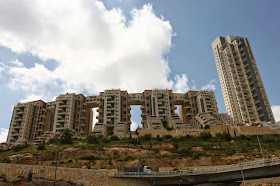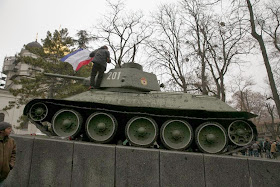by Benson Agoha | Crossrail
Crossrail has completed 65% of the project, but what have they done with the hundreds of tonnes of rock and soil excavated to make way for the arrival of London's newest underground rail line?
In a recent release, crossrail said it has had to store samples of the different soil s and rocks encountered as it bored its way through London several hundred metres deep underground.
At this moment Crossrail uses temporary locomotives to carry workers and materials though the tunnels, giving the passengers a rare and unique opportunity to explore Crossrail's recently completed tunnels 40 metres below buildings and river Thames.
Crossrail used a total of 8 tunneling machines to drill through the the different types of soil and rock it had to conquer to make the project a reality. Now, it has stored collected samples several metres beneath us too.
In a press release, Crossrail said it had stored the soil and rock cores from deep below the city in the UK's largest salt mine. Once removed from the ground, the soil and rock cores lose moisture and slowly deteriorate.
The cores at DeepStore, Crossrail said, are contained 150 metres underground at a consistent humidity level and an ambient temperature of 15 degrees Celsius. This prevents deterioration without the use of a temperature controlled warehouse.
 |
| * Imagine when tunnels were built with little more than primitive tools. |
This storage will hopefully benefit proposed future tunneling projects in London, Crossrail said.
Crossrail construction commenced in 2009 at Canary Wharf. By the time tunneling completed in May 2015, 8, thousand tonne tunneling machines had spent three years underground, creating 42km (or 26 miles of new 6.2 metre diameter rail tunnels under London.
The tunnels weave their way between existing underground lines, sewers, utility tunnels and building foundations from station to station at depths of up to 42 metres. The Project is now over 65% complete and services through central London is expected to commence in 2018.
The Woolwich Station Box, deep beneath new high-rise Residential buildings fronting the High Street, is now being fitted out, as are many other stations across the capital. Work is also beginning at the site of the Woolwich Crossrail station building.
Speaking about the soil and rock underground storage, Mike Black, Crossrail’s Head of Geotechnics said: “These soil and rock cores played a crucial role in the Crossrail project as they allowed us to build up a detailed picture of the ground conditions below London. The information gained from them can be used by future London tunneling projects.”
Read more at: www.crossrail.co.uk.
Read more at: www.crossrail.co.uk.






















































































































































































No comments:
Post a Comment